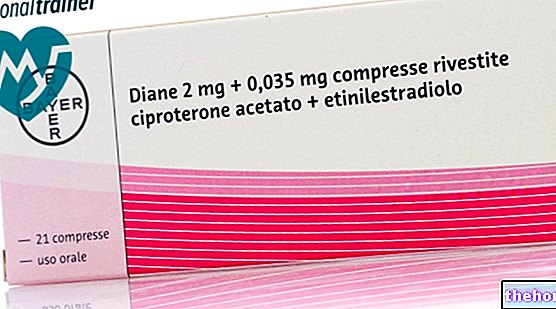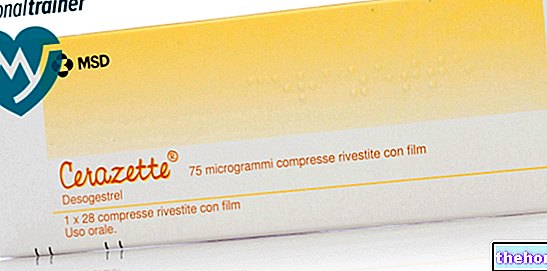Active ingredients: Dimenhydrinate
XAMAMINE 50 mg soft capsules
XAMAMINE Children 25 mg soft capsules
XAMAMINE 25 mg medicated chewing gum
Why is Xamamina used? What is it for?
XAMAMINE contains the active substance dimenhydrinate which belongs to the category of anti-emetic (against vomiting) and anti-nausea medicines.
XAMAMINA is used for seasickness, air, car and train sickness.
Contact your doctor if you do not notice any improvement or if you notice worsening of your symptoms after a short period of treatment
Contraindications When Xamamina should not be used
Do not take XAMAMINA
- if you are allergic to dimenhydrinate, other antihistamines or any of the other ingredients of this medicine
- in case of pregnancy and lactation.
Xamamina is contraindicated in children under 2 years of age.
Precautions for use What you need to know before taking Xamamina
Talk to your doctor or pharmacist before taking XAMAMINE.
If you are being treated with ototoxic drugs (which cause damage to the ear) you should take this medicine with caution as it may mask the symptoms of ear toxicity.
If you have narrow-angle glaucoma (increased pressure inside the eye), prostatic hypertrophy (enlarged prostate), urinary retention (difficulty urinating), slowed intestinal transit (constipation), bronchial asthma, epilepsy , porphyria (rare hereditary disease) you should take this medicine with caution.
Children
Do not use in children under 2 years of age.
Interactions Which drugs or foods can modify the effect of Xamamina
Tell your doctor or pharmacist if you are taking, have recently taken or might take any other medicines. Take care in case of concomitant administration of:
- other CNS depressants, such as alcohol, barbiturates (drugs against depression), other hypnotics (drugs that induce sleep), sedatives or tranquilizers, as concomitant intake may increase the sedative effects.
- other anticholinergic drugs, including antidepressants as it may increase their effects.
- aminoglycoside antibiotics or other ototoxic drugs, as dimenhydrinate can mask the first symptoms of ear toxicity which can only reveal itself when the damage is irreversible (see section "Warnings and precautions").
XAMAMINA with alcohol
The medicine may increase the effects of alcohol. In such cases, be careful if you experience increased sedative effects.
Warnings It is important to know that:
Pregnancy and breastfeeding
XAMAMINA is contraindicated in pregnancy and during lactation.
Driving and using machines
This medicine, like other antihistamines, can cause sedation which can manifest as sleepiness as an undesirable effect. If you experience these side effects, you should be careful s in carrying out tasks that require vigilance such as driving cars and using machines.
XAMAMINA contains:
- soft capsules, medicated chewing gums and chewable tablets contain sorbitol. If you have been told by your doctor that you have an intolerance to some sugars, contact your doctor before taking this medicinal product.
- Medicated chewing gums also contain aspartame. This medicine contains a source of phenylalanine. It can be harmful to you if you have phenylketonuria.
- The soft capsules also contain sodium ethyl parahydroxybenzoate (E215) and sodium propyl parahydroxybenzoate (E217). They can cause allergic reactions (even delayed).
Dosage and method of use How to use Xamamina: Dosage
Always take this medicine exactly as described in this leaflet or as directed by your doctor or pharmacist. If in doubt, consult your doctor or pharmacist.
XAMAMINE 50 mg soft capsules
The recommended dose is:
- Adults: 1 soft capsule half an hour before the trip; if necessary repeat the dose after 3-4 hours, up to a maximum of 4 soft capsules in 24 hours.
The soft capsule should not be chewed, but swallowed even without water
XAMAMINE Children 25 mg soft capsules
The recommended dose is:
- Children aged between 2-6 years: 1 soft capsule of XAMAMINE Children half an hour before travel up to a maximum of 3 times in 24 hours.
- Children aged 7-12 years: 1-2 soft capsules of XAMAMINA Children half an hour before the trip, up to a maximum of 2-3 times in 24 hours.
The soft capsule should not be chewed, but swallowed even without water.
Xamamina Children 25 mg soft capsules should not be used in children under 2 years of age.
XAMAMINE 25 mg medicated chewing gum
The recommended dose is:
- Adults: 1 medicated chewing gum at the first symptoms of nausea; the effect lasts about 4 hours. If necessary, repeat the dose after 3-4 hours, up to a maximum of 4 medicated chewing gums in 24 hours.
- Children between the ages of 4 and 12: 1 medicated chewing gum half an hour before the trip or at the first symptoms of nausea and vomiting and if necessary repeat the dose after 6-8 hours, up to a maximum of 2 medicated chewing gums in 24 hours.
The medicated chewing gum should be chewed without swallowing it. Xamamina Children 25 mg medicated chewing gum should not be used in children under 4 years of age.
Do not exceed the prescribed dose unless recommended by your physician.
Consult your doctor if the disorder occurs repeatedly or if you have noticed any recent changes in its characteristics.
Use only for short periods of treatment.
Overdose What to do if you have taken too much Xamamina
In case of accidental ingestion / intake of an overdose of XAMAMINE, notify your doctor immediately or go to the nearest hospital.
The most common symptom of overdose is sleepiness. Toxic doses can cause seizures, coma and breathing problems.
If you have any further questions on the use of this medicine, ask your doctor or pharmacist.
Side Effects What are the side effects of Xamamina
Like all medicines, this medicine can cause side effects, although not everybody gets them.
With the use of antihistamines, sedation, drowsiness, dry mouth, sensitivity to light, visual disturbances, disturbances in the ability to urinate, headaches, anorexia, nausea, allergic skin reactions may occur.
Less frequently dizziness, feeling of weakness, insomnia (especially in children), euphoria, tremors, convulsions (especially in children), decreased blood pressure, increased heart rate.
Reporting of side effects
If you get any side effects, talk to your doctor, pharmacist or nurse. This includes any possible side effects not listed in this leaflet. You can also report side effects directly via the national reporting system at https: // www. aifa.gov.it/content/segnalazioni-reazioni-avverse
By reporting side effects you can help provide more information on the safety of this medicine.
Expiry and Retention
Keep this medicine out of the sight and reach of children.
Do not use this medicine after the expiry date which is stated on the carton after EXP.
XAMAMINA soft capsules: Store at a temperature not exceeding 25 ° C.
Do not throw any medicines via wastewater or household waste. Ask your pharmacist how to throw away medicines you no longer use. This will help protect the environment.
What XAMAMINA contains
XAMAMINE 50 mg soft capsules
- The active ingredient is dimenhydrinate. One soft capsule contains: 50 mg of dimenhydrinate.
- The other ingredients are: macrogol 400. Capsule shell: gelatin; partially dehydrated liquid sorbitol; ethyl sodium-parahydroxybenzoate (E215); propyl sodium parahydroxybenzoate (E 217).
XAMAMINE Children 25 mg soft capsules
- The active ingredient is dimenhydrinate. One soft capsule contains: 25 mg of dimenhydrinate.
- The other ingredients are: macrogol 400. Capsule shell: gelatin; partially dehydrated liquid sorbitol; ethyl sodium-parahydroxybenzoate (E215); propyl sodium parahydroxybenzoate (E 217).
XAMAMINE 25 mg medicated chewing gum
- The active ingredient is dimenhydrinate. One medicated chewing gum contains: 25 mg of dimenhydrinate.
- The other ingredients are: Core: Type A methacrylic acid copolymer, sorbitol, mint flavor, magnesium stearate, gum base, levomenthol, aspartame, talc, colloidal silica, anhydrous tricalcium phosphate. Coating: hypromellose, macrogol 6000, titanium dioxide, yellow quinoline (E104), patent blue V (E131).
Description of what XAMAMINA looks like and contents of the pack
It comes in the form of soft capsules and medicated chewing gum.
XAMAMINE 50 mg soft capsules: Carton containing 2, 6, 10 capsules
XAMAMINE Children 25 mg soft capsules: Box containing 6 capsules
XAMAMINE 25 mg medicated chewing gum: Box containing 6 gums
Source Package Leaflet: AIFA (Italian Medicines Agency). Content published in January 2016. The information present may not be up-to-date.
To have access to the most up-to-date version, it is advisable to access the AIFA (Italian Medicines Agency) website. Disclaimer and useful information.
01.0 NAME OF THE MEDICINAL PRODUCT
XAMAMINA
02.0 QUALITATIVE AND QUANTITATIVE COMPOSITION
XAMAMINE 50 mg soft capsules
One soft capsule contains:
active ingredient: dimenhydrinate 50 mg
Excipients: sorbitol, parabens
XAMAMINE Children 25 mg soft capsules
One soft capsule contains:
active ingredient: dimenhydrinate 25 mg
Excipients: sorbitol, parabens
XAMAMINE 25 mg medicated chewing gum
A medicated chewing gum contains:
active ingredient: dimenhydrinate 25 mg
Excipients: Aspartame, sorbitol
For the full list of excipients, see section 6.1
03.0 PHARMACEUTICAL FORM
Soft capsules
Medicated chewing gum
04.0 CLINICAL INFORMATION
04.1 Therapeutic indications
Sea, plane, car and train sickness.
04.2 Posology and method of administration
XAMAMINE 50 mg soft capsules
In adults 1 soft capsule half an hour before the trip; if necessary repeat the dose after 3-4 hours, up to a maximum of 4 soft capsules in 24 hours.
XAMAMINE Children 25 mg soft capsules
In children aged 2-6 years 1 soft capsule of Xamamina Children half an hour before travel up to a maximum of 3 times in 24 hours. In children aged 7-12 years 1-2 soft capsules of Xamamina Children half an hour "hour before the trip, up to a maximum of 2-3 times in 24 hours.
XAMAMINE 25 mg medicated chewing gum
In adults 1 medicated chewing gum at the first symptoms of nausea; the effect lasts about 4 hours. If necessary, repeat the dose after 3-4 hours, up to a maximum of 4 medicated chewing gums in 24 hours.
In children aged between 4 and 12 years 1 medicated chewing gum half an hour before the trip or at the first symptoms of nausea and vomiting and if necessary repeat the dose after 6-8 hours, up to a maximum of 2 gum chew medicated within 24 hours.
Do not exceed the recommended dose.
04.3 Contraindications
Hypersensitivity to the active substance, to other antihistamines or to any of the excipients.
Contraindicated in children under 2 years of age.
Contraindicated during pregnancy and breastfeeding.
04.4 Special warnings and appropriate precautions for use
The product should be administered with caution in subjects suffering from narrow-angle glaucoma, prostatic hypertrophy, urinary retention, slowing of intestinal transit, bronchial asthma, epilepsy, porphyria.
The product may mask the symptoms of ototoxicity and therefore should be administered with caution to patients receiving ototoxic drugs.
Soft capsules and medicated chewing gums contain sorbitol: Patients with rare hereditary problems of fructose intolerance should not take this medicine.
Soft capsules contain parabens which can cause allergic reactions (including delayed).
Medicated chewing gums contain aspartame, a source of phenylalanine. It can be harmful to you if you have phenylketonuria.
04.5 Interactions with other medicinal products and other forms of interaction
The product may enhance the effects of other CNS depressants, such as alcohol, barbiturates, other hypnotics, sedatives or tranquilizers. In case of concomitant intake of these substances, attention must be paid in order to avoid additive phenomena of sedation.
The product may potentiate the effects of other anticholinergic drugs, including antidepressants. If administered concomitantly with aminoglycoside antibiotics or other ototoxic drugs, dimenhydrinate can mask the first symptoms of ototoxicity, which can only be detected when the damage is irreversible (see also section 4.4).
04.6 Pregnancy and breastfeeding
Pregnancy. In reproduction studies in rats and rabbits doses 20-25 times higher than those normally used in therapy in humans did not show teratogenic effects or reduced fertility. However, no data are available on the use of the product in pregnant women. Therefore, although the teratogenicity of the product appears unlikely, the use of dimenhydrinate in pregnancy is contraindicated.
Feeding time. Small amounts of dimenhydrinate pass into breast milk. Given the possible adverse events of the product in infants, the use of dimenhydrinate during lactation is contraindicated.
04.7 Effects on ability to drive and use machines
Since the most frequent secondary effect of antihistamines is sedation which can manifest itself as drowsiness, this must be taken into account by those who carry out operations requiring integrity of the degree of vigilance (driving vehicles, operating machinery).
04.8 Undesirable effects
The following side effects have been reported following treatment with Xamamina:
"Reporting of suspected adverse reactions
Reporting of suspected adverse reactions occurring after authorization of the medicinal product is important as it allows continuous monitoring of the benefit / risk balance of the medicinal product. Healthcare professionals are asked to report any suspected adverse reactions via the national reporting system. "address https://www.aifa.gov.it/content/segnalazioni-reazioni-avverse".
04.9 Overdose
In case of overdose consult your doctor immediately.
Sleepiness is the most usual symptom of overdosing. Toxic doses can produce: convulsion, coma and respiratory depression. If necessary, implement symptomatic therapy.
When needed, respiratory assistance.
05.0 PHARMACOLOGICAL PROPERTIES
05.1 Pharmacodynamic properties
Pharmacotherapeutic group: antiemetics and antinauseants
ATC code A04AD49
The pharmacodynamic properties of dimenhydrinate consist of antiemetic, antihistamine and anticholinergic activity. Dimenhydrinate also has a depressive activity on the central nervous system. Although the exact mechanism of its antiemetic action has not been fully understood, it has been shown that dimenhydrinate inhibits labyrinth stimulation, acting first on the otolith system and, for higher doses, also on the semicircular canals of the auricular labyrinth.
Dimenhydrinate has an anticholinergic action and this activity is considered by some authors to be the main mechanism of action, since the cholinergic stimulation of the vestibular and reticular systems could be responsible for nausea and vomiting resulting from movement.
The central nervous system depressant effects usually subside after a few days of treatment. After prolonged use, there may be a slight reduction in antiemetic activity.
05.2 Pharmacokinetic properties
After administration, as a single oral dose, diphenhydramine appears in the blood within 15 minutes and peak plasma concentrations are obtained between 1 and 4 hours. The concentration remains high for a similar period and then runs exponentially so that the plasma half-life is 6-7 hours.
The drug is uniformly distributed in the different tissues of the body, including the CNS and almost all of the drug is eliminated in the urine in the form of metabolites.
The main site of metabolic transformation is in the liver.
Diphenhydramine crosses the placenta and has been found in breast milk.
05.3 Preclinical safety data
The LD50 values obtained after oral administration, in a single dose, in mice and rats, are respectively 150 and 600 times the human DTeS per kg.
Repeated oral administration for 3 months in rats of both sexes and in dogs, did not cause any weight alteration in the animals treated with the low dose while it caused a weight loss, related to the decrease in feed consumption, in those treated with the high dose. The chemical-clinical, haematological examinations, the weight of the organs and the histological examination did not show any difference with respect to the controls.
Daily oral administration of Xamamina to rats did not cause alterations in any parameter relating to the mothers and did not show teratogenic action.
Xamamina did not cause any change in fertility in either male or female.
The administration of 35 and 70 mg / kg of Xamamine orally to rats, for the entire duration of pregnancy and lactation, also did not determine changes in the weight parameters relating to the mothers in both periods, neither in the duration of gestation nor the number and weight of those born.
The teratogenic study performed by administering Xamamine to pregnant rabbits did not show the presence of toxic effects either on the mother or on the organogenesis level.
06.0 PHARMACEUTICAL INFORMATION
06.1 Excipients
XAMAMINE 50 mg soft capsules and XAMAMINE Children 25 mg soft capsules
macrogol 400.
Casing:
jelly; partially dehydrated liquid sorbitol; ethyl sodium-parahydroxybenzoate (E215); propyl sodium parahydroxybenzoate (E 217).
XAMAMINE 25 mg medicated chewing gum
Core: copolymer of Type A methacrylic acid, sorbitol, mint flavor, magnesium stearate, gum base, levomentol, aspartame, talc, colloidal silica, anhydrous tricalcium phosphate;
Coating: hypromellose, macrogol 6000, titanium dioxide, quinoline yellow (E104), patent blue V (E131).
06.2 Incompatibility
None known
06.3 Period of validity
XAMAMINA 50 mg soft capsules and XAMAMINA Children 25 mg soft capsules: 5 years.
XAMAMINE 25 mg medicated chewing gum: 3 years.
06.4 Special precautions for storage
Xamamina soft capsules: store at a temperature not exceeding 25 ° C
06.5 Nature of the immediate packaging and contents of the package
Opaque white PVC / PVDC blister sealed with coupled aluminum and heat-sealing plastic material.
XAMAMINE 50 mg soft capsules Box of 2, 6, 10 capsules
XAMAMINE Children 25 mg soft capsules Box of 6 capsules
XAMAMINE 25 mg medicated chewing gum Box of 6 gums
06.6 Instructions for use and handling
The soft capsule should not be chewed, but swallowed even without water.
The medicated chewing gum goes to chew it without swallowing it.
07.0 MARKETING AUTHORIZATION HOLDER
BRACCO S.p.A.
Via E. Folli, 50
MILAN 20134
08.0 MARKETING AUTHORIZATION NUMBER
XAMAMINE 50 mg soft capsules
Box of 2 A.I.C. capsules 002955058
Box of 6 A.I.C. capsules 002955060
Box of 10 A.I.C. capsules 002955072
XAMAMINE Children 25 mg soft capsules
Box of 6 A.I.C. capsules 002955108
XAMAMINE 25 mg medicated chewing gum
Box of 6 A.I.C. 002955134
09.0 DATE OF FIRST AUTHORIZATION OR RENEWAL OF THE AUTHORIZATION
XAMAMINE 50 mg soft capsules
First authorization: December 1986. Renewal 2010
XAMAMINE Children 25 mg soft capsules
First authorization: February 1988. Renewal 2010
XAMAMINE 25 mg medicated chewing gum
First authorization: July 2000. Renewal 2010




























